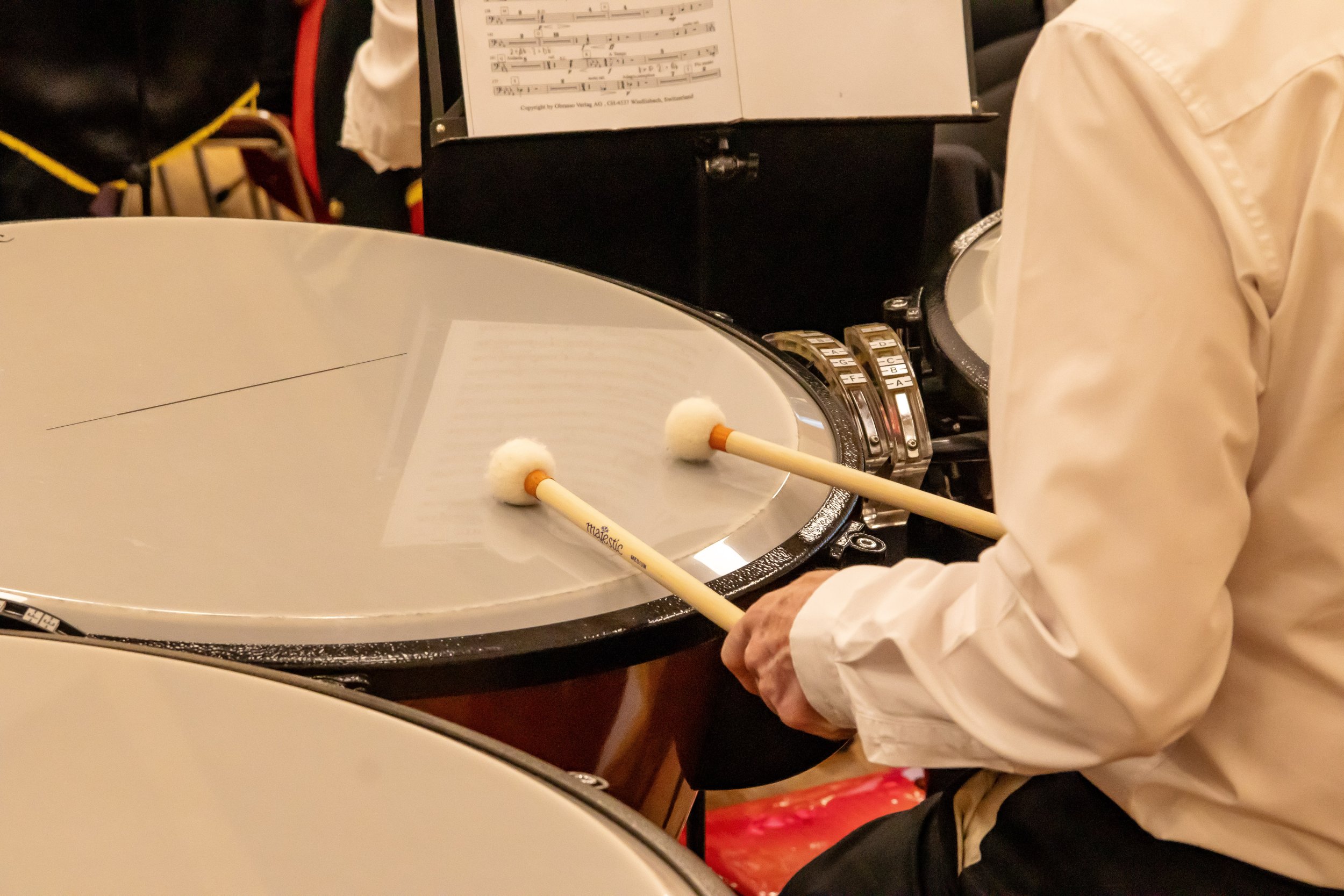
Our Band
Have you ever wondered what makes a brass band so special? Well read on and we will explain!
Meet the Team
-

Conductor - Jamie Lee
A conductor is the musical leader who directs the ensemble during rehearsals and performances, setting the tempo, interpreting the music, and guiding the musicians through dynamics, phrasing, and articulation, essentially acting as the "musical director" by controlling the overall sound and expression of the band through hand gestures and cues
-

Front Row Cornets
The front-row cornet refers to the group of cornet players positioned closest to the conductor, typically on the left side of the ensemble, often playing the most prominent melodic lines or solo parts within the cornet section, essentially acting as the "lead" cornets in the band. Miranda is the principal cornet in NTB, pictured in the centre.
The soprano cornet occupies the highest melodic role, often considered the "piccolo" of the brass section, playing bright, decorative lines above the main melody, typically with only one player on this instrument, adding sparkle and colour to the overall sound
-

Back Row Cornets
The back-row cornets provide harmonic support and fuller sound to the overall brass section. Our back row also contains the repiano cornet. Primarily responsible for providing a prominent melodic line within the cornet section, sometimes playing solo passages or doubling the highest-pitched cornet part, soprano cornet.
-

Flugelhorn and Tenor horns
The flugelhorn typically occupies a position bridging the upper and lower sections, often playing melodic lines that blend with both the higher cornets and the lower euphonium/baritone horns, essentially acting as a "soprano euphonium" with its rich, warm tone, making it a versatile instrument capable of supporting both the melody and providing a fuller sound depending on the arrangement.
The tenor horn occupies a "middle voice" position, playing melodies and harmonies that bridge the gap between the higher-pitched cornets and the lower-pitched euphoniums and tubas, essentially acting as the central melodic voice within the brass section
-

Baritone and Euphoniums
The baritone position refers to the player of the baritone horn, which sits in the middle-low register, acting as a bridge between the higher-pitched instruments like cornets and the lower tuba section, providing a rich, supportive sound to the overall ensemble. The baritone is pictured in the centre.
The euphonium typically occupies a central position within the low brass section, often acting as the "leader" of the tenor line, playing melodic and harmonic parts with a rich, mellow sound, bridging the gap between the higher brass instruments and the tuba, while also capable of playing both melodic and supporting roles depending on the arrangement
-

Trombones
The trombone typically occupies a mid-range position, playing melodic lines and providing harmonic support, often acting as a bridge between the higher-pitched trumpets and the lower brass instruments like tubas and euphoniums; the trombone's unique slide mechanism allows it to play a wide range of notes, enabling it to access both higher and lower registers depending on the musical context
The bass trombone typically occupies the lowest register, playing the foundational bass line, acting as the "anchor" of the trombone section, and often written in bass clef, effectively providing the low harmonic support for the ensemble.
-

E♭ and B♭ Bass
The "E♭ bass" and "B♭ bass" refer to two different tuba-like instruments, both playing bass lines, with the E♭ bass typically considered the higher-pitched of the two and often positioned slightly further to the right in the band, while the B♭ bass is the lower-pitched instrument, usually sitting to the left, providing the foundation of the bass section
-

Percussion and Kit
The percussion section is responsible for providing rhythm, accents, and dynamic punctuation to the overall sound by playing instruments like the snare drum, bass drum, cymbals, and sometimes timpani, effectively acting as the rhythmic backbone of the band while supporting the brass melodies
The kit position refers to the role of a percussionist, usually playing a drum kit, providing rhythmic support and accents to the brass instruments; essentially, the kit player is the drummer in a brass band setting
